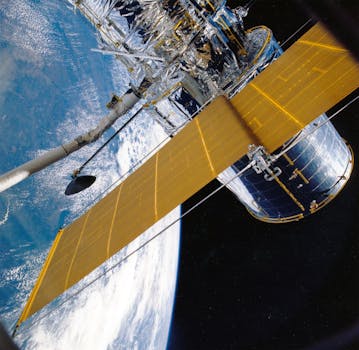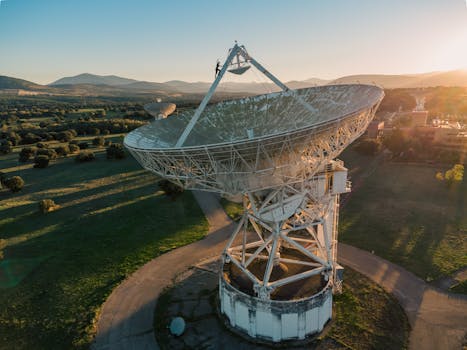
LEO Satellites: Revolutionizing Global Connectivity with WordPress
LEO satellites, or Low Earth Orbit satellites, are a type of satellite that orbits the Earth at an altitude of around 160 to 2,000 kilometers. These satellites have been gaining popularity in recent years due to their potential to provide global connectivity, particularly in remote and underserved areas. With the help of WordPress, we can explore the vast potential of LEO satellites in revolutionizing global connectivity.
LEO satellites have several advantages over traditional geostationary satellites, including lower latency, higher bandwidth, and lower costs. They are also more flexible and can be easily reconfigured to meet changing demands. Additionally, LEO satellites can provide coverage to areas where traditional satellites cannot, such as in polar regions and areas with high levels of satellite congestion.
How LEO Satellites Work

LEO satellites work by transmitting and receiving data to and from Earth-based stations. They use a range of frequencies, including Ka-band, Ku-band, and C-band, to communicate with users. The satellites are equipped with antennas and transponders that allow them to receive and transmit data, which is then relayed to other satellites or to Earth-based stations.
LEO satellites are typically launched into orbit using a launch vehicle, such as a rocket. Once in orbit, they use their own propulsion systems to maintain their position and altitude. The satellites are also equipped with solar panels and batteries, which provide power to the satellite’s systems.
Applications of LEO Satellites

LEO satellites have a range of applications, including satellite communications, Earth observation, and navigation. They can provide broadband internet access to remote and underserved areas, as well as support IoT applications such as smart farming and smart cities. LEO satellites can also be used for Earth observation, providing high-resolution images of the Earth’s surface and monitoring environmental changes.
LEO satellites are also being used for navigation, providing location-based services and supporting autonomous vehicles. They can also be used for scientific research, such as studying the Earth’s atmosphere and monitoring space weather.
Challenges and Limitations of LEO Satellites

While LEO satellites have many advantages, they also face several challenges and limitations. One of the main challenges is the high cost of launching and operating a constellation of LEO satellites. Additionally, LEO satellites have a relatively short lifespan, typically ranging from 5 to 10 years, which means that they need to be replaced regularly.
LEO satellites also face regulatory challenges, as they need to comply with a range of regulations and standards. This can be a complex and time-consuming process, particularly for companies that are new to the satellite industry.
Conclusion

LEO satellites are revolutionizing global connectivity, providing a range of benefits and applications. With the help of WordPress, we can explore the vast potential of these satellites and learn more about their technology and applications. While LEO satellites face several challenges and limitations, they have the potential to transform the way we communicate and access information.
See more:



